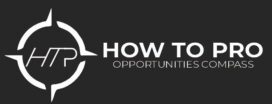
How to Dominate the US Work Visa Application Process: The Ultimate Blueprint for 2025
How to Dominate the US Work Visa Application Process: The Ultimate Blueprint for 2025
- Understanding the US Work Visa Landscape
- Types of US Work Visas
- H-1B Specialty Occupation Visa
- L-1 Intracompany Transfer Visa
- O-1 Extraordinary Ability Visa
- Other Employment-Based Categories (E-2, TN, etc.)
- Common Challenges and Pitfalls
- Types of US Work Visas
- Strategy 1: Start Early and Prepare Thoroughly
- Creating a Detailed Visa Calendar
- Gathering All Required Documentation
- Strategy 2: Choose the Right Visa Category
- Matching Your Profile to Visa Requirements
- Avoiding Misclassification Risks
- Strategy 3: Leverage Premium Processing
- How Premium Processing Works
- Weighing Cost vs. Speed Benefits
- Strategy 4: Optimize Your Petition Packet
- Crafting a Persuasive Cover Letter
- Ensuring Complete and Accurate Forms
- Strategy 5: Secure Strong Employer Sponsorship
- Employer’s Role and Obligations
- Tips for Communicating with HR
- Strategy 6: Use Expert Legal Assistance
- When to Hire an Immigration Attorney
- DIY vs. Professional Representation
- Strategy 7: Track and Respond Promptly
- Monitoring Your Case Status Online
- Handling Requests for Evidence (RFEs)
- Bonus Tips for Speed and Peace of Mind
- E-Filing and Digital Tools
- Joining Visa Applicant Communities
- Conclusion & Call-to-Action
- Frequently Asked Questions (FAQs)
How to Dominate the US Work Visa Application Process: The Ultimate Blueprint for 2025
Introduction
Securing a US work visa is often seen as navigating a labyrinth—one filled with strict deadlines, precise documentation, and complex regulations. Yet for millions of skilled professionals worldwide, a US work visa represents opportunity: the chance to advance a career, contribute to cutting-edge projects, and immerse oneself in one of the world’s most dynamic economies. Whether you’re an H-1B engineer, an L-1 manager transferring within your multinational company, or an O-1 artist recognized for extraordinary achievement, understanding how to accelerate your application can save you months—or even years—of delay.
In this guide, you’ll discover seven proven strategies—refined through interviews with immigration attorneys, deep dives into USCIS data, and firsthand accounts from successful applicants—to help you fast-track your US work visa application. We’ll cover everything from early preparation and category selection to premium processing, petition optimization, employer collaboration, legal assistance, proactive case management, and bonus tips for peace of mind. By the end, you’ll have a clear, step-by-step roadmap, practical checklists, and insider insights to turbocharge your application and minimize surprises. Ready to take control of your future? Let’s dive in.
1. Understanding the US Work Visa Landscape
To fast-track your application, you must first know the playing field. This section breaks down the most common employment-based visas, current processing trends, and typical roadblocks that stall applications.
1.1. Types of US Work Visas (US Work Visa Application Process)
H-1B Specialty Occupation Visa (Cap-Subject)
- Designed for roles requiring specialized knowledge and a minimum of a bachelor’s degree or equivalent.
- Annual cap: 65,000 regular + 20,000 master’s-level. In recent years, demand has exceeded supply by 2–3x.
L-1 Intracompany Transfer Visa (Cap-Exempt)
- For executives, managers (L-1A) or employees with specialized knowledge (L-1B) transferring within multinational companies.
- No numerical cap; processing times vary by service center (4–8 months).
O-1 Extraordinary Ability Visa
- Granted to individuals with extraordinary achievement in sciences, arts, education, business, or athletics.
- Requires extensive evidence: awards, publications, media coverage.
Other EB Categories (E-2, TN, etc.)
- E-2 Treaty Investor: For nationals of treaty countries investing substantially in a US enterprise.
- TN (NAFTA): For Canadian and Mexican professionals under USMCA.
1.2. Common Processing Timelines & Delays
- USCIS Service Centers: Each center publishes average processing times—check USCIS Case Processing Times weekly.
- Peak Filing Seasons: H-1B petitions (“cap season”) see spikes in March–April, with premium processing lines filling fast.
- RFEs & Denials: Approximately 30–40% of H-1B petitions receive RFEs; responding correctly can add 1–3 months.
1.3. Key Pitfalls to Avoid
- Late Documentation: Missing a single transcript or letter can trigger an RFE.
- Wrong Category Selection: Filing H-1B when an L-1 or O-1 fits better can mean withdrawal and re-filing.
- Poor Employer Coordination: Lack of communication leads to last-minute rushes.
2. Strategy 1: Start Early and Prepare Thoroughly – (US Work Visa Application Process)
Time is your greatest asset. Cultivating a proactive mindset and detailed plan is the foundation for speed.
2.1. Build a Comprehensive Visa Calendar
- Key Milestones: Filing window opening (e.g., first week of April for H-1B), premium processing deadlines, consular interview scheduling.
- Tools: Use digital calendars (Google Calendar, Outlook) with color-coded reminders 90, 60, 30, and 7 days before each deadline.
2.2. Compile Your Document Checklist
- Personal Documents: Valid passport, educational transcripts, degrees, resume/CV.
- Employment Records: Offer letter, detailed job description, pay stubs (if extending) or contract.
- Certifications & Licenses: Professional licenses, board certifications, if applicable.
- Translations & Notarizations: Official translations for any non-English documents; get these done 2–3 weeks early.
2.3. Conduct a Mock Review
- Practice Internal Audit: Have HR or a third party review your packet against the official USCIS checklist at least 30 days before submission.
- Gap Analysis: Identify missing items, unclear statements, or potential misclassifications.
3. Strategy 2: Choose the Right Visa Category – (US Work Visa Application Process)
Selecting the appropriate category isn’t just about eligibility—it’s about speed and certainty.
3.1. Match Your Qualifications Precisely
- Degree & Experience Alignment: Confirm your degree field matches the “specialty occupation” requirements for H-1B, or your managerial role fits L-1A.
- Evidence for Extraordinary Ability: For O-1, gather proof of national/international awards, published work, peer recommendations.
3.2. Avoid Misclassification & Its Consequences
- Check Official Guidance: Reference USCIS Work Visa Types to verify criteria.
- Consult with HR or Immigration Counsel: If your role straddles categories (e.g., tech lead vs. manager), get expert advice to prevent denials.
3.3. Leverage Niche Visas When Possible
- TN for Canadians/Mexicans: Faster consular processing, no numerical cap, lower fees.
- E-2 for Investors: If you’re funding a US startup, E-2 can be quicker than EB-2/EB-3 pathways.
4. Strategy 3: Leverage Premium Processing – (US Work Visa Application Process)
When speed is critical, premium processing offers a guaranteed timeline.
4.1. Understanding Premium Processing
- Service Guarantee: USCIS commits to adjudicating within 15 calendar days for Form I-129 or I-140 petitions filed with the $2,500 fee.
- Extension Option: Can be added after initial filing if standard processing drags.
4.2. Cost-Benefit Analysis
- Employer vs. Employee: Many employers absorb the fee, especially when project start dates hinge on approval.
- ROI Considerations: Delaying a key technical lead can cost more in billable hours than the fee itself.
4.3. Timing Your Request
- Early Add-On: File with premium processing from day one if you anticipate tight deadlines.
- Upgrading Later: If your standard petition is pending beyond 30 days, upgrade to premium to avoid indefinite waiting.
5. Strategy 4: Optimize Your Petition Packet – (US Work Visa Application Process)
A meticulously organized packet signals professionalism and reduces RFE risk.
5.1. Crafting a Compelling Cover Letter
- Concise Summary: 1–2 pages summarizing purpose, visa category, beneficiary qualifications, and supporting documents.
- Logical Flow: Use numbered sections matching your document tabs (e.g., Tab 1: Form I-129; Tab 2: LCA; Tab 3: Employer Letter; etc.).
5.2. Ensuring Form Accuracy
- Form I-129 Checklist: Verify beneficiary’s name, date of birth, passport number, job details match exactly across all forms.
- Form DS-160 for Consular Processing: Ensure electronic submission is confirmed and print the DS-160 barcode page.
5.3. Tabbed, Indexed, and Color-Coded
- Visual Clarity: Use colored tabs or section dividers; provide an index at the front.
- Tab Samples:
- Tab A: Cover letter & filing fee
- Tab B: Form I-129 & G-28 (if represented by counsel)
- Tab C: LCA approval
- Tab D: Beneficiary evidence (degrees, certifications)
6. Strategy 5: Secure Strong Employer Sponsorship – (US Work Visa Application Process)
Employer coordination can make or break your timeline.
6.1. Employer’s Key Responsibilities
- Labor Condition Application (LCA): Filed with the Department of Labor at least one week before petition.
- Public Access File: Employer must maintain wage and workplace notices—crucial for H-1B compliance.
- Ability to Pay: For EB-2/EB-3 green card filings, employers need financial statements showing ability to pay the offered wage.
6.2. Effective HR Partnerships
- Kick-Off Meetings: Set expectations, share document templates, agree on internal deadlines.
- Shared Checklists: Provide HR with a clear, bulleted checklist of items they control (e.g., company brochures, financials, organizational chart).
- Dedicated Point Person: Assign one HR rep to own your case, reducing back-and-forth delays.
7. Strategy 6: Use Expert Legal Assistance – (US Work Visa Application Process)
While DIY can save fees, expert guidance pays dividends in time saved and errors avoided.
7.1. When to Engage an Immigration Attorney
- Complex Cases: RFE responses, concurrent filings (H-1B and PERM), self-petitions (EB-1).
- International Entrepreneurs: Structuring E-2 or EB-5 investments.
- Extraordinary Ability Petitions: O-1 applications require deep legal analysis of evidence.
7.2. Choosing the Right Counsel
- Experience & Specialization: Look for attorneys certified by the American Immigration Lawyers Association (AILA).
- Fee Structures: Compare flat fees vs. hourly rates vs. success-fee arrangements.
7.3. Maximizing Your Attorney Relationship
- Provide Complete Info Upfront: Detailed resume, list of achievements, draft letters of recommendation.
- Set Communication Protocols: Weekly status updates, preferred channels (email vs. portal).
- Review Drafts Carefully: Ensure accuracy and clarity before submission.
8. Strategy 7: Track and Respond Promptly (US Work Visa Application Process)
Proactive case management keeps you ahead of surprises.
8.1. Monitoring Case Status
- USCIS Online Portal: Use your receipt number to check status daily.
- USCIS Text Updates: Sign up for text or email alerts when your status changes.
8.2. Responding to Requests for Evidence (RFEs)
- RFE Anatomy: USCIS will list specific deficiencies; each point must be addressed in order.
- Rapid Response Team: Have documents pre-assembled so you can respond within 30 days (even if you have 60).
- Cover Letter Strategy: Create an RFE response cover letter mirroring the RFE’s structure—“Issue 1: [USCIS Question]. Response: [Your Evidence].”
8.3. Handling Notices of Intent to Deny (NOIDs)
- Legal Expertise Needed: NOIDs are more serious than RFEs—consult your attorney immediately.
- Evidence Gathering: Collect supplemental affidavits, company statements, and additional proof to overturn the NOID.
9. Bonus Tips for Speed and Peace of Mind – (US Work Visa Application Process)
Go beyond the basics to smooth out spikes and unexpected hurdles.
9.1. Embrace E-Filing & Digital Tools
- USCIS E-Filing: Available for many forms; instantaneous confirmation reduces mail delay.
- Case Management Software: Tools like LawLogix or Tracker by Equisoft help attorneys and employers collaborate seamlessly.
9.2. Join Applicant Communities
- Forums & Groups: VisaJourney, Trackitt, and AILA member forums offer real-time anecdotes on processing times and strategies.
- LinkedIn Groups: Professional networks in your industry often share tailored advice (e.g., “Tech Workers in US Immigration”).
9.3. Maintain Backup Plans
- Plan B Visas: If H-1B is denied or delayed, consider TN (for Canadians/Mexicans) or E-2 (for investors).
- Grace Periods: Stay aware of the 60-day grace period after H-1B termination to either change status or leave the US.
Conclusion – How to Dominate the US Work Visa Application Process: The Ultimate Blueprint for 2025
Fast-tracking your US work visa application hinges on meticulous preparation, category alignment, strategic use of premium processing, packet optimization, strong employer collaboration, expert legal support, and vigilant case management. By implementing these seven strategies—and leveraging bonus tips like e-filing, community support, and fallback options—you’ll transform a daunting process into a controlled, predictable journey.
Ready to take the next step? Download our Free Visa Preparation Toolkit, subscribe for weekly immigration insights, or book a complimentary consultation with our seasoned attorneys. Your American career launchpad awaits—let’s accelerate together!
Also Read: 10 Secrets to Getting Your Student Visa Approved for Top Study Destinations
-
Frequently Asked Questions (FAQs) – US Work Visa Application Process
1. How much faster is premium processing compared to regular processing?
With premium processing, USCIS must adjudicate within 15 calendar days, versus typical standard processing times of 3–6 months. citeturn2processing_times2. Can I file multiple visa petitions simultaneously?
Yes—concurrent filings are common (e.g., H-1B plus PERM for green card), but each petition must stand on its own merit and fee. citeturn2processing_times3. What happens if I miss an RFE deadline?
If USCIS does not receive your response by the specified deadline (typically 60 days), they will deny the petition. Immediate action and attorney involvement are crucial.4. How do I know which visa category best suits me?
Compare your role, qualifications, and employer’s needs against USCIS criteria. When in doubt, consult an AILA-certified attorney.5. Is self-representation (pro se filing) advisable?
For straightforward extensions or renewals, pro se may suffice. However, for initial petitions, RFEs, or unique categories (O-1, EB-1), professional guidance dramatically reduces risk and delay.
Call to Action: US Work Visa Application
Don’t leave your future to chance!
- Download our Free Visa Preparation Toolkit now.
- Subscribe for weekly migration updates.
- Book your Complimentary Strategy Session with our AILA-certified attorneys today.
Your expedited US work visa journey starts here—let’s make it happen!








